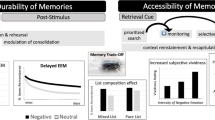Abstract
The purpose of our study is to assess the emotional responses to disclosing APO E genotype to asymptomatic older adults at increased risk for Alzheimer disease (AD). This is a longitudinal cohort study of volunteer subjects who were aged 50 years or over, asymptomatic for (AD), had a family history of AD, passed a psychological assessment, and participated in pre- and post-test genetic counseling and three follow-up visits over 10 months. We analyzed responses by three emotional constructs: depressed, worried, and relieved. Three hundred and twenty-eight subjects were screened, 76 received their APO E genotype. When emotional responses occurred it was immediate, between baseline and the 1 month follow-up. Emotional reactions did not change significantly past 1 month. Our results suggest that for emotionally stable persons, disclosing results of their APO E genotype, high risk subjects did not report more depression or worry and low risk subjects felt relieved by knowing the results. Future studies should evaluate the risks of disclosure to family members involved in the diagnostic work-up of a relative and include subjects from a broader range of emotional stability and socioeconomic background.
Similar content being viewed by others
References
ADRDA. (1987). National program to conquer Alzheimer’s disease. Chicago, IL: Alzheimer Disease and Related Disorders Association.
Bird, T. D. (1995). Apolipoprotein E genotyping in the diagnosis of Alzheimer’s disease: A cautionary view. Ann Neurol, 38, 2–3.
Corder, E. H., Saunders, A. M., Strittmatter, W. J., et al. (1993). Gene dose of apolipoprotein E type 4 allele and the risk of Alzheimer’s disease in late onset families. Science, 261, 921–923.
Corder, E. H., Saunders, A. M., Risch, N. J., et al. (1994). Protective effect of apolipoprotein type 2 allele for late onsetalzheimer disease. Nat Genet, 7, 180–84.
Croyle, R. T., Smith, K. R., Botkin, J. R., et al. (1997). Psychological responses to BRCA1 mutation testing: Preliminary findings. Health Psychol, 16, 63–72.
Evans, D. A., Scherr, P. A., Cook, N. R., et al. (1990). Estimated prevalence of Alzheimer’s disease in the United States. Milbank Q, 68, 267–289.
Farrer, L. A., Brin, M. F., Elsas, L., et al. (1995). Statement on use of apolipoprotein E testing for Alzheimer disease. American college of medical genetics/american society of human genetics working group on APO E and Alzheimer disease. JAMA, 274, 1627–1629.
Farrer, L. A., Cupples, L. A., Haines, J. L., et al. (1997). Effects of age, sex, ethnicity on the association between apolipoprotein E genotype and Alzheimer disease: A meta-analysis. APO E and Alzheimer Disease Meta Analysis Consortium. JAMA, 278 (16), 349–56.
Fisher, L. D., & van Belle, G. (1993). Biostatistics a methodology for the health sciences. New York: Wiley, p. 210.
Folstein, M. F., Folstein, Se., & McHugh, P. R. (1975). Mini-Mental State A practical method for grading the cognitive state of patients for the clinician. J Psychiatr Res, 12, 189–198.
Hixson, J. E., & Vernier, D. T. (1990). Restriction isotyping of human apolipoprotein E by gene amplification and cleavage with Hhal. J Lipid Res, 31, 545–548.
Holtzman, N. A., & Watson, M. S. (1997). Promoting safe and effective genetic testing in the United States: Final report of the task force on genetic testing. (National Institute of Health, Washington, DC).
Lerman, C., Narod, S., Schulman, K., et al. (1996). BRCA1 testing in families with hereditary breast-ovarian cancer: A prospective study of patients’ decision making and outcomes. JAMA, 272, 1885–1892.
Lynch, H. T., Watson, P., & Conway, T. A. (1993). DNA screening for breast/ovarian cancer susceptibility on linked markers: A family study. Arch Int Med, 53, 1979–1987.
Medical and Scientific Advisory Committee, and Alzheimer’s Disease International. (1995). Consensus statement on predictive testing for Alzheimer disease. Alzheimer Dis Assoc Disord 9, 182–187.
Montano, C. B. (1994). Recognition of depression in a primary care setting. J Clin Psychiatry, 55(1, Suppl), 18–34.
Nyenhuis, D. L., Yamamoto, C., Luchetta, T., et al. (1999). Adult and geriatric normative data and validation of the profile of mood states. J Clin Psychol, 55(1), 79–86.
Post, S. G. (1996). On not jumping the gun: Ethical aspects of APO E gene testing for Alzheimer’s disease. Ann NY Acad Sci., 802, 111–119.
Roberts, J. S., LaRusse, S. A., Katzen, H., et al. (2003). Reasons for seeking genetic susceptibility testing among first-degree relatives of people with Alzheimer disease. Alzheimer Dis Assoc Disord, 17(2), 86–93.
Roses, A. D. (1996). Apolipoprotein E and Alzheimer’s disease: A rapidly expanding field with medical and epidemiological consequences. Ann NY Acad Sci, 802, 50–57.
Saunders, A. M., Hulette, C., Welsh-Bohmer, K. A., et al. (1996). Specificity, sensitivity, and predictive value of apolipoprotein E genotyping for sporadic Alzheimer’s disease. Lancet, 348, 90–93.
Strittmatter, W. J., Saunders, A. M., Schmechel, D., et al. (1993). Apolipoprotein E: High-avidity binding to B-amyloid and increased frequence of type 4 allele in late-onset family Alzheimer disease. Proc Natl Acad Sci, 90, 1977–1981.
Whooley, M. A., Avins, A. L., Miranda, J., & Browner, W. S. (1997). Case finding instruments for depression: Two questions are as good as many. J Gen Intern Med, 12, 439–445.
Wiggins, S., Whyte, P., Huggins, M., et al. (1992). The psychological consequences of predictive testing for Huntington’s disease. NEJM, 327, 1401–1405.
Yesavage, J. A., & Brink, T. L. (1983). Development and validation of a geriatric scale: A preliminary report. J Psychiatr Res, 17, 37–49.
Author information
Authors and Affiliations
Corresponding author
Rights and permissions
About this article
Cite this article
Romero, L.J., Garry, P.J., Schuyler, M. et al. Emotional Responses to APO E Genotype Disclosure for Alzheimer Disease. J Genet Counsel 14, 141–150 (2005). https://doi.org/10.1007/s10897-005-4063-1
Issue Date:
DOI: https://doi.org/10.1007/s10897-005-4063-1




